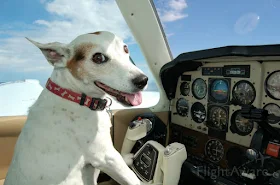In the chaos of cardboard boxes, packing tape and moving trucks, you might not realize how stressed your pets feel, too.
Start preparing your pets now, before your move...
Pets require special attention when moving, and the main ingredient to your pet's stress-free move is pre-planning.
Because pets have an instinctive fear of new surroundings, pet owners want to help them adjust quickly.
Whether you’re traveling across town or across the country, here are some tips for making moving day as easy and stress-free as possible for the entire family, including your beloved pets...
You don’t know all the hiding places in this new home...you don’t know if there is a hole in the back of the cabinet where the cat can get into the wall.
Consider making the setup at your new home similar to the setup at the previous home when it comes to furniture and litter box placement. Cats, can get very attached to their surroundings, so a somewhat familiar layout will make the move easier on them.
Start preparing your pets now, before your move...
Pets require special attention when moving, and the main ingredient to your pet's stress-free move is pre-planning.
Because pets have an instinctive fear of new surroundings, pet owners want to help them adjust quickly.
Whether you’re traveling across town or across the country, here are some tips for making moving day as easy and stress-free as possible for the entire family, including your beloved pets...
- If you are moving to an apartment or condo, make sure your pet is allowed before you move in. Many communities do not permit cats, dogs, aquariums and exotic pets (iguanas, venomous snakes, tarantulas, ferrets, etc.).
- Get your pet's health records from your veterinarian. The information will help your new veterinarian provide good care. And keep a photograph of your pet, in case the animal gets lost.
- Dogs and cats that only go into the carrier for check-ups need to be re-introduced to the carriers so they are not petrified when they come out on moving day.
- Before the moving trucks roll in, check with the movers and make sure it is OK to have animals around. If it is not allowed, owners may need to find somewhere to keep their pets on moving day.
- As the trucks are being loaded, owners need to make sure that their pets are secured. With people coming in and out of the home, pets may escape when a door is left open. There also needs to be a safe and secure place for the pets at the new home as the movers bring in boxes and furniture.
You don’t know all the hiding places in this new home...you don’t know if there is a hole in the back of the cabinet where the cat can get into the wall.
Consider making the setup at your new home similar to the setup at the previous home when it comes to furniture and litter box placement. Cats, can get very attached to their surroundings, so a somewhat familiar layout will make the move easier on them.
- Prior to moving day, make sure your pets are fitted with collars and ID tags with your name and current cell-phone number. Microchipping is also recommended and will serve as a backup if your pet loses its collar.
- If your pet is prone to car sickness, make sure you visit your veterinarian a few weeks prior to your move to get any prescribed medications and feeding recommendations.
- For long-distance moves, be sure to identify pet-friendly hotels along your route and reserve rooms ahead of time.
- On moving day, make sure your pets are secured in a crate or closed room of your house or apartment until you are ready to load them into your car. The activities and sounds of moving day will be frightening to your pets, so it is important that they be kept in a secure area to reduce their stress as much as possible and to prevent an accidental escape.
- Always transport cats, small dogs and other small animals in a secure, well-ventilated pet carrier. Keep larger dogs leashed and under control at all times. The stress of a move can cause even the most obedient dog to run away in unfamiliar surroundings. NEVER transport any pet in an open truck bed, trunk of a car or storage area of a moving van.
- For long-distance moves, make sure you give your pet potty breaks and fresh water whenever you stop for a break yourself. Make sure pets are leashed at all times during potty breaks.
Health Certificate. Most states require a health certificate for dogs. Many states require one for cats and other pets as well. The certificate must be issued by a licensed veterinarian and be no more than 10 days old. Up-to-date inoculation records should accompany it. Check with your veterinarian or animal-control agency for the state's requirements
Airlines that accept pets for transportation have specific regulations covering their passage, whether they are accompanied or unaccompanied.
To get all the information you need when taking your pet with you on the airplane, along with with names of airlines that are just for pets, click here.
Finally, remain calm during the move. Pets quickly pick up on our stress so calm owners will help prevent animals from getting worked up.
Now snuggle up with your furry friend(s) and enjoy your new home!
Now snuggle up with your furry friend(s) and enjoy your new home!





